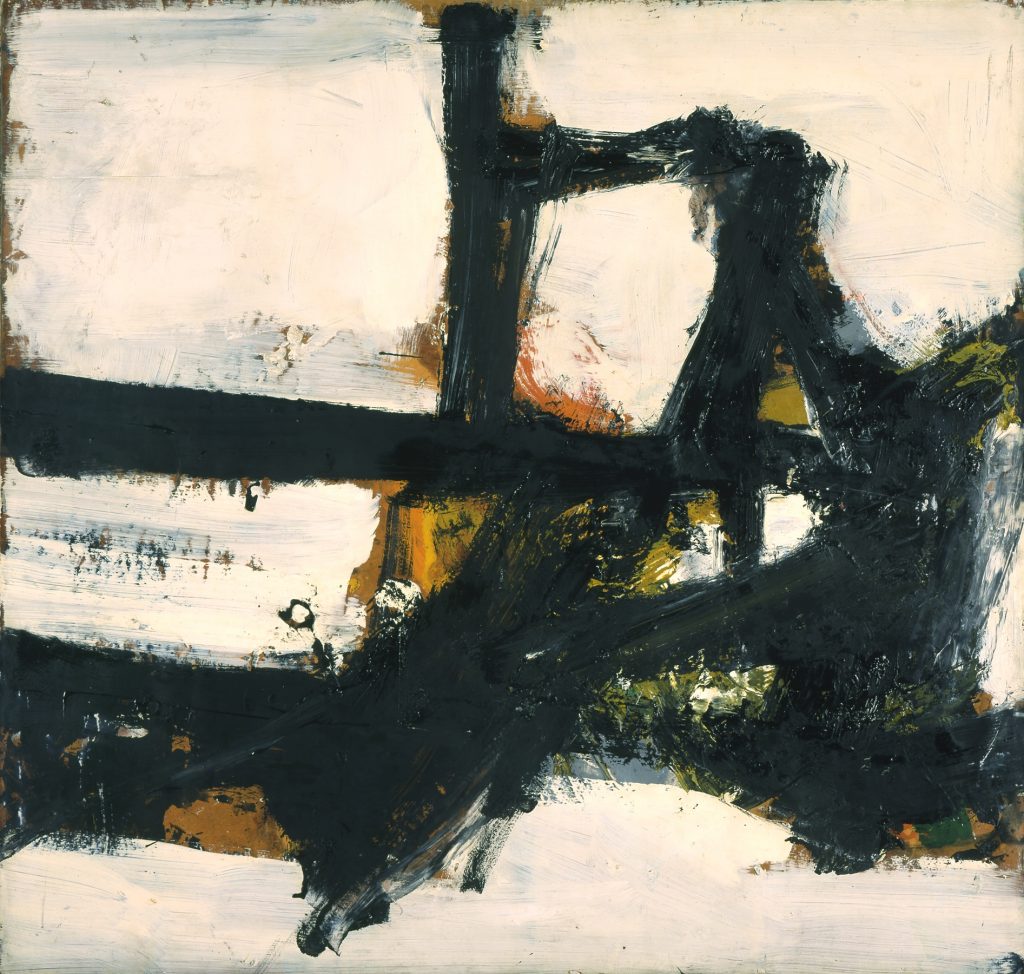1. Assign the class to examine Orange Outline and Berkeley No. 8.
2. Conduct a brainstorming session in which students provide one-word descriptions or adjectives that come to mind as they view the Kline and Diebenkorn paintings. Write the words on the board in no particular order.
3. Hold a brief class discussion focusing on grouping the words from the brainstorming exercise into categories. Ask students to think of a category and then select the words that reflect that category. How do these categories and words relate to the painting? How did the artist create those references? What specific elements of the works of art helped you generate these words?
After the initial discussion of the words, direct the students to consider the following questions about place: What kinds of places do these works remind you of? What do these two works tell us about urban and rural environments? What do the works tell us about their time periods? What kinds of sounds do you associate with the two environments?
Briefly discuss the connection between urban environments and abstract expressionism using the background material on abstract expressionism.
4. Have the students read the New York Times article about the music of Morton Feldman and his relationship to abstract expressionism.
5. Play the YouTube video “For Franz Kline” by Morton Feldman, and discuss the relationship between the paintings and the music.
6. Assign students to paint two images: one based on their interpretation of or feelings about Kline’s Orange Outline and one based on their interpretation of or feelings about Diebenkorn’s Berkeley No. 8. Replay the song “For Franz Kline” by Morton Feldman while they work. Direct students to incorporate aspects of place into each of their works. Ask for volunteers to discuss their paintings with the class and explain how they used the music and the two Museum paintings for inspiration.
Written by Zoe Voigt, Humanities Teacher
